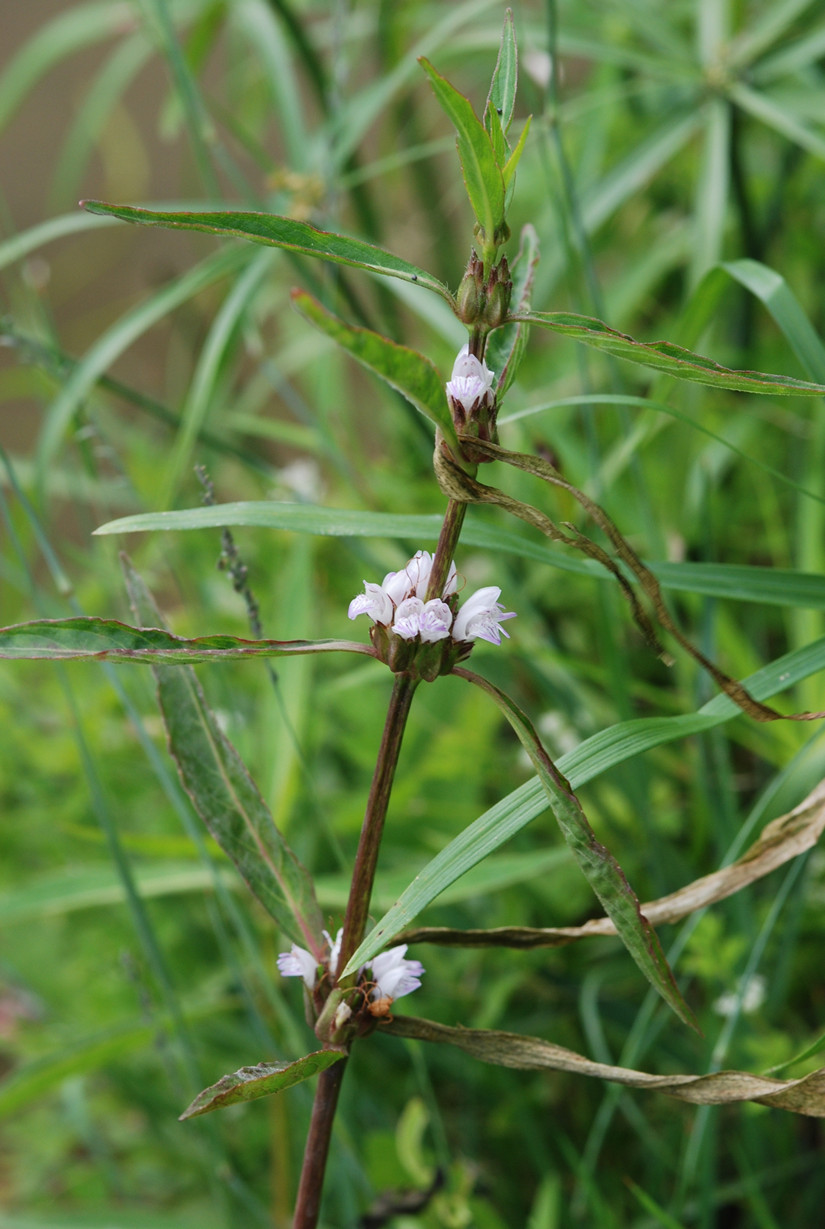November

Hygrophila salicifolia is a native aquatic plant of Hong Kong. It usually grows next to streams or paddy fields, and it flowers in autumn. You can find it in the Wetland Discovery Centre of Wetland Park after careful searching.
This plant may seem ordinary from the first sight, but look at it closely and you will find clusters of small purplish flowers in the leaf axils. You can also feel its characteristic square stem upon touching.
The leaves are borne in pairs. Each pair of leaves is arranged in right angles away from other pairs on top and below. In botanical terms, this is known as 'decussate' leaf arrangement. The leaves are a bit similar to the willow which is also elongated in shape, therefore botanists have given it the specific epithet 'salicifolia', which means willow (Salix) -leafed (folia). The genus 'Hygrophila' means wet (hygro) -loving (phile), describing its preferred habitat.
Plants of the genus Hygrophila have seeds that, when fully developed, would become sticky in contact with water. They are then easily attached to animals and dispersed.
Apart from the use of Chinese medicinal herb, Hygrophila salicifolia is also the food plant of some butterfly larvae like Junonia almanac (Peacock Pansy) and Junonia atlites (Grey Pansy). Most people would think that butterflies belong only to the land, the fact is that some butterflies actually have a close relationship with aquatic plants. For example, the Peacock Pansy commonly seen in Wetland Park relies on the aquatic Hygrophila salicifolia and Alternanthera philoxeroides as host plants. Therefore it is not difficult to see Peacock Pansy flying around watersides in Wetland Park.